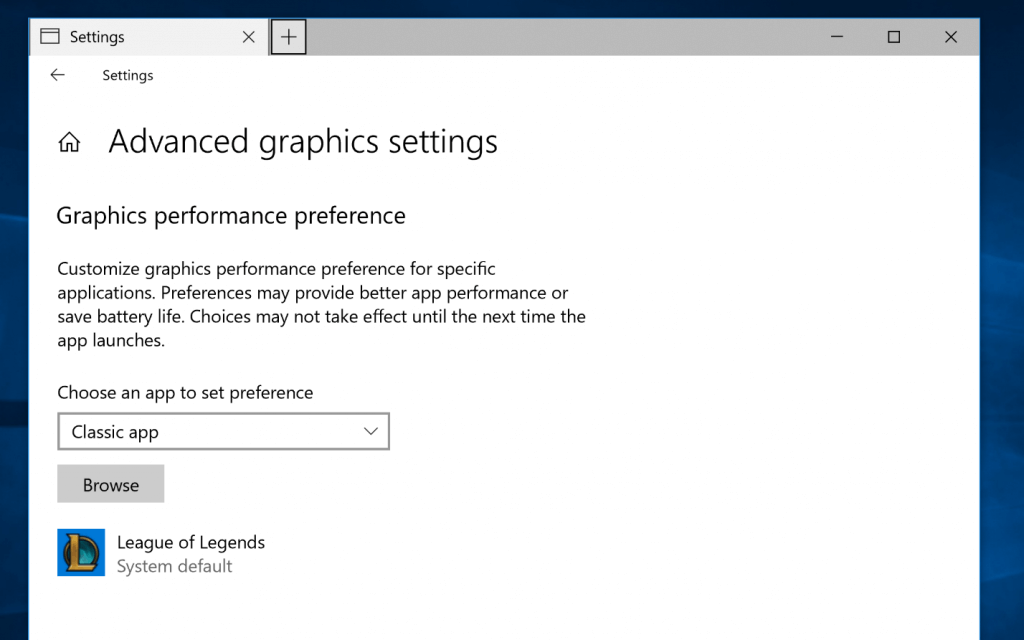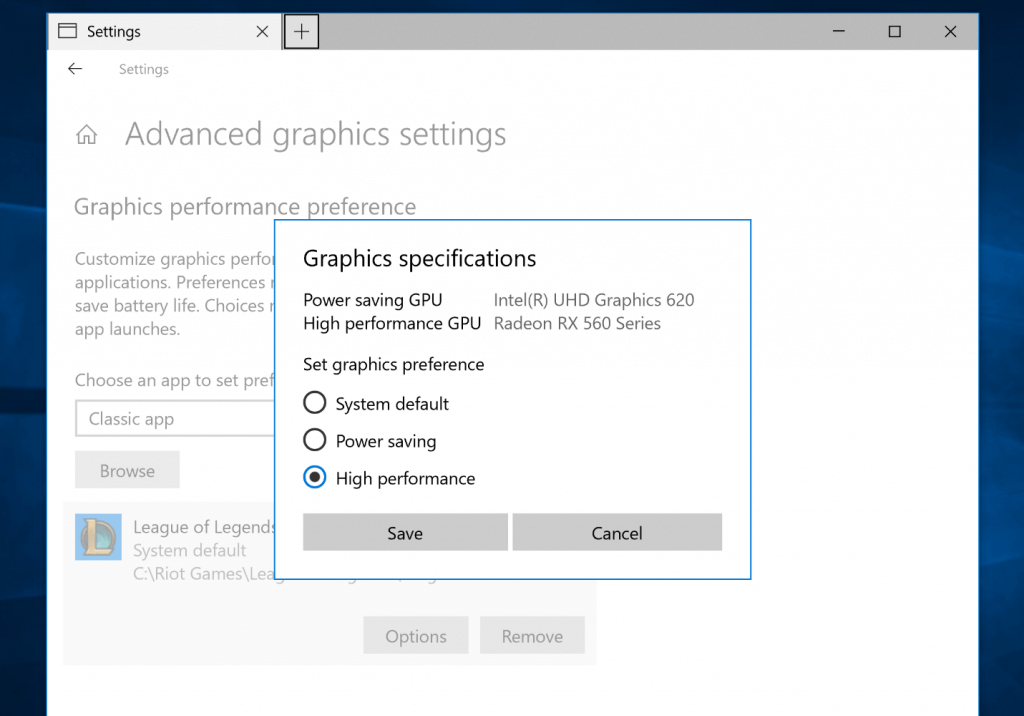Modern laptops often come with two GPUs or graphics chips. One of them is intended to consume the least possible power while providing reasonable performance for every day tasks. For example, laptops with Intel CPUs come with an integrated GPU for this purpose. For more powerful tasks like gaming or video processing, a discrete GPU can be used. It can be something like NVIDIA GTX1050 or some AMD chip. Windows 10 now allows setting which GPU should be used for both Store and Desktop apps.
Advertisеment
When you have drivers installed for both the video adapters, a special context menu command will appear. For example, here is a screenshot taken in Windows 7 with Intel and NVIDIA GPUs present in the laptop.

As you can see, an extra context menu command appears for executable files.
In Windows 10, such an option is built-in inside the Settings app which now allows specifying which GPU to use for an app on multi-GPU systems. When you set an application preference in the Settings app, it will take precedence over other third party Control Panel settings provided by the GPU driver.
This option is also handier than the context menu.
Let's see how to configure this feature.
To set the preferred GPU for apps in Windows 10, do the following.
- Open the Settings app.
- Go to System - Display and scroll down to the Advanced graphics settings link("Graphics settings").
- On the next page, set the app type to either Universal or Desktop app depending on what you want.

- Browse for the app to add it to the list using the Browse button.
- Click on the app in the list, then click on the Options button to open the configuration dialog.

- Select the desired graphics processor. You can choose from either System default, Power saving, or High performance.
You are done.
Note: By default, all apps are tied to the System default option, which means that their performance profile is defined by drivers. When you remove an app from the list mentioned above, your previously-made changes will be reverted to the System default profile.
Windows 10 considers the integrated GPU as the power-saving GPU, and the high performance GPU is the discrete GPU or external GPU. If you have both, a discrete GPU and an external GPU on a system, the external GPU is considered the high performance GPU.
That's it.
Support us
Winaero greatly relies on your support. You can help the site keep bringing you interesting and useful content and software by using these options:

Windows 10 version 1709 does not have the Advanced Graphics screen. It only opens a small properties window for only the Intel graphics adapter. The nVidia adapter is not shown.
However, 17093+ has it.
Is it possible to select which GPU is considered high power and which is considered power saving? I have both a 2080ti attached to my main screen which I run games on, it’s the primary monitor, I also have a 1080ti attached to the second screen which basically sits there running web pages and skype.
I only get the 2080ti in both high and low power selections and I can’t seem to find a way to change it, just a lot of people asking.
Nope. That is not possible in case of multiple external SVGAs.